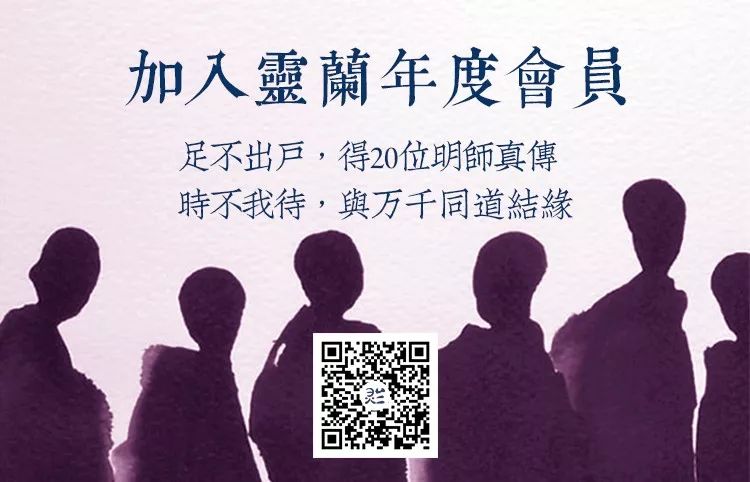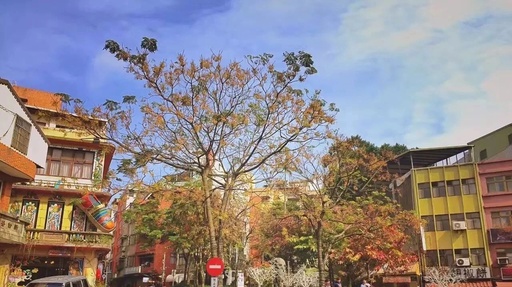Read articles in the morning, and check comments in the evening.
Pin the TCM Book Club at the top, click the blue text above.

TCM Book Club Issue 1724
One issue daily, accompanying the growth of TCM practitioners
IIntroduction:“For those who use needles, if there is deficiency, fill it; if there is fullness, drain it; if it is stagnant, remove it.” The author of this article has compiled five methods of bloodletting therapy, which include guiding principles and specific applications, worthy of careful study. (Editor/Wang Chao)

Five Methods of Bloodletting Therapy by Dr. Zhou Deyi
Compiled by Qin Lihong
Dr. Zhou Deyi is a renowned TCM physician in Anhui Province, nearing eighty years old, with over fifty years of clinical experience, particularly skilled in acupuncture. His bloodletting therapy is unique. The author has learned deeply from Dr. Zhou during clinical practice and summarizes his bloodletting methods for further dissemination.
1. Localized Bloodletting Method
This method selects acupuncture points based on the location of the disease. If the disease occurs in the head, puncture the Taiyang (Sun) point; if it occurs above the navel, puncture the Shizhe (Cubital) or Quxi (Curved Ditch) points; if it occurs below the navel, puncture the Weizhong (Middle of the Knee) point. These points are located near superficial large veins, making them suitable for puncture; as stated in the Ling Shu (Spiritual Pivot), the Taiyin, Jueyin, and Taiyang meridians are all blood-rich meridians. For those with excess blood, bloodletting is advisable, and the Taiyang point is an extraordinary point for treating head and facial diseases effectively, while Shizhe and Weizhong are connecting points, primarily addressing internal organ diseases, hence Dr. Zhou’s selection.
During clinical practice, it is often necessary to combine with other points. This method is commonly used for deeper diseases or internal organ issues, where there are both local primary symptoms and accompanying systemic symptoms.
For example, for headaches with red, swollen eyes accompanied by fever, puncture the Taiyang point for bloodletting and puncture the Hegu (Joining Valley) point; for headaches and sore throats with fever, puncture the Taiyang point for bloodletting and puncture the Shaoshang (Lesser Shang) and Quchi (Pool at the Crook) points; for breast swelling and pain with fever, puncture the Shizhe point for bloodletting, combined with local hot compresses; for upper abdominal pain and vomiting with fever, puncture the Shizhe point for bloodletting and puncture the Zhongwan (Middle of the Stomach) and Liangqiu (Beam Mound) points; for right lower abdominal pain with constipation and fever, puncture the Weizhong point for bloodletting and puncture the Zusanli (Three Mile) and Tianshu (Heavenly Pivot) points; for lower abdominal pain with purulent blood in stool and fever, puncture the Weizhong point for bloodletting and puncture the Quchi and Tianshu points, etc.
2. Meridian-Based Bloodletting Method
This method is guided by the theory of “where the meridian passes, the treatment applies,” targeting diseases occurring along a specific meridian or multiple meridians for bloodletting. In clinical practice, the disease is categorized by meridian, following the pathways of the meridians on the body surface, and the rules of meridian and collateral flow for bloodletting. Dr. Zhou also stated, “If it is not visible, take it from above and below.”
This means this method is not limited to points or painful areas but can also involve puncturing superficial veins along the affected meridian, “better to lose the point than the meridian,” referring to this.
For example: acute low back pain occurring on both sides of the spine indicates obstruction of the Foot Taiyang meridian, puncture the Weizhong point for bloodletting and puncture the most painful area of the lower back; if the pain occurs along the spine, indicating obstruction of the Governing Vessel, puncture the Renzhong (Human Center) point for bloodletting and puncture the Qihai (Sea of Qi) and Taichong (Great Rushing) points; for wind-heat mastitis with sore throat and difficulty breathing, indicating obstruction of the Hand Taiyin meridian, puncture the Shaoshang point for bloodletting and puncture the Tianzhu (Heavenly Pillar) point; for vertex headache with dizziness and eye swelling, indicating obstruction of the Foot Jueyin meridian, puncture the Baihui (Hundred Meetings) and Taiyang points for bloodletting and puncture the Fengchi (Wind Pool) point, etc.
3. Syndrome Differentiation Bloodletting Method
This method is guided by the theories of organ differentiation, Qi, blood, and body fluid differentiation, and meridian differentiation, to select points for bloodletting based on syndrome differentiation.
For example: for women with dysmenorrhea and cold pain in the lower abdomen, if the abdominal pain precedes menstruation, it indicates Qi stagnation and blood stasis, with obstruction of the Foot Three Yin meridian, puncture the intersection point of the Foot Three Yin and Ren meridians, San Yin Jiao (Three Yin Intersection) for bloodletting, which benefits the liver and kidney and regulates the menstrual cycle, similar to the Si Wu Tang (Four Substance Decoction), puncture the Qihai point to regulate Qi, and moxibustion on the Guanyuan (Gate of Origin) point to warm the uterus, collectively achieving the effect of regulating Qi and blood;
for skin itching and redness, indicating heat in the blood, puncture San Yin Jiao and Xue Hai (Blood Sea) for bloodletting to regulate blood, clear heat, and regulate menstruation, combined with puncturing Quchi to disperse wind and nourish the blood, and puncturing Shaofu (Lesser Palace) to clear the heart and eliminate heat;
for acute ankle sprains, indicating local meridian obstruction and Qi and blood stasis, puncture Ashi (Ah Shi) and Taichong points for bloodletting to promote Qi and invigorate blood;
for carbuncles and furuncles, based on the principle that “all pain and itching sores belong to the heart,” puncture the Quxi point for bloodletting to drain heat from the heart, if accompanied by fever, combine with puncturing Dazhui (Great Vertebra) and Quchi points. If the sore appears on the neck and back, combine with puncturing the Weizhong point for bloodletting to clear heat from the Taiyang meridian; if it appears on the hypochondrium, combine with puncturing the Yanglingquan (Yang Mound Spring) point for bloodletting to clear heat from the Shaoyang meridian; if it appears on the limbs, puncture along the meridian or Ashi points for bloodletting to drain meridian heat and detoxify.
4. Local Bloodletting Method
This method involves bloodletting at the local site of the disease. This method can be applied at acupuncture points or in localized areas, with a relatively limited range, most suitable for localized and superficial diseases.
For example: for swollen tongue and stiffness, puncture the Jinjing (Golden Liquid) and Yuye (Jade Liquid) points for bloodletting; for toothache and gum swelling, puncture the affected area for bloodletting and puncture the Hegu point; for psoriasis with itching and scaling, use plum blossom needles to prick the local area for bloodletting, combined with cupping; for late-stage filariasis presenting as “rubber leg,” puncture the affected leg in various locations for bloodletting, puncturing the Zusanli and San Yin Jiao points; for joint sprains and swelling, puncture the painful area for bloodletting, etc.
5. Emergency Bloodletting Method
This method is specifically used for emergencies in critical conditions, with four main characteristics:
① located at the extremities, or puncturing the twelve jing points;
② at superficial large veins;
③ using extraordinary points;
④ selecting points from the Governing Vessel and Pericardium meridians.
This method is highly stimulating and effective, with benefits of unblocking meridians, draining heat, and reviving consciousness.
For example, in cases of syncope, puncture the Shixuan (Ten Diffusions) points for bloodletting and puncture the Renzhong point;
for grand mal epilepsy, puncture the Quxi and Weizhong points for bloodletting, puncturing the Dazhui and Jiuwei (Bird Tail) points;
for stroke with closed mouth, puncture the Taiyang, Quxi, and Weizhong points for bloodletting, or puncture the twelve jing points, puncturing the Yongquan (Gushing Spring) and Laogong (Palace of Labor) points;
for snake bites, if on the upper limb, puncture the Quxi and Baixie (Eight Evils) points for bloodletting; if on the lower limb, puncture the San Yin Jiao and Baifeng (Eight Winds) points for bloodletting.
For heatstroke, puncture the Quxi and Shixuan points for bloodletting, puncturing the Yongquan point, etc.
Conclusion
The bloodletting therapy has effects of removing stasis and generating new blood, unblocking meridians, reducing swelling and pain, and reviving consciousness to drain heat, primarily used for excess heat syndromes and stasis pain syndromes. The five methods above can be used flexibly by Dr. Zhou, either separately or in combination. The needles used are often three-edged needles, or thick hair needles and plum blossom needles, with the amount of bloodletting depending on the condition, generally aiming for 7ml of bloodletting, with techniques being light, shallow, and quick, after bloodletting, do not press on the puncture site, allowing it to stop naturally is preferable.
If blood does not flow smoothly, it is necessary to massage around the puncture site or assist with cupping; if there are superficial inflammations and ulcers, moxibustion can be used as an adjunct.
Strict disinfection is required before the procedure, and caution is advised for patients with coagulation disorders, weak constitution, and pregnant women when using this method. Additionally, bloodletting refers to puncturing the vessels to achieve bloodletting; puncturing points is a rapid technique, stopping immediately upon puncturing, regardless of whether blood flows, and the two methods are distinct.
Recommended Reading
Immediate Effects of Bloodletting Therapy (Otolaryngological Diseases)
Using Bloodletting Therapy to Cure Nine Difficult Cases Unsolvable by Western Medicine
|
I Copyright Statement
I Submission Email [email protected] |


